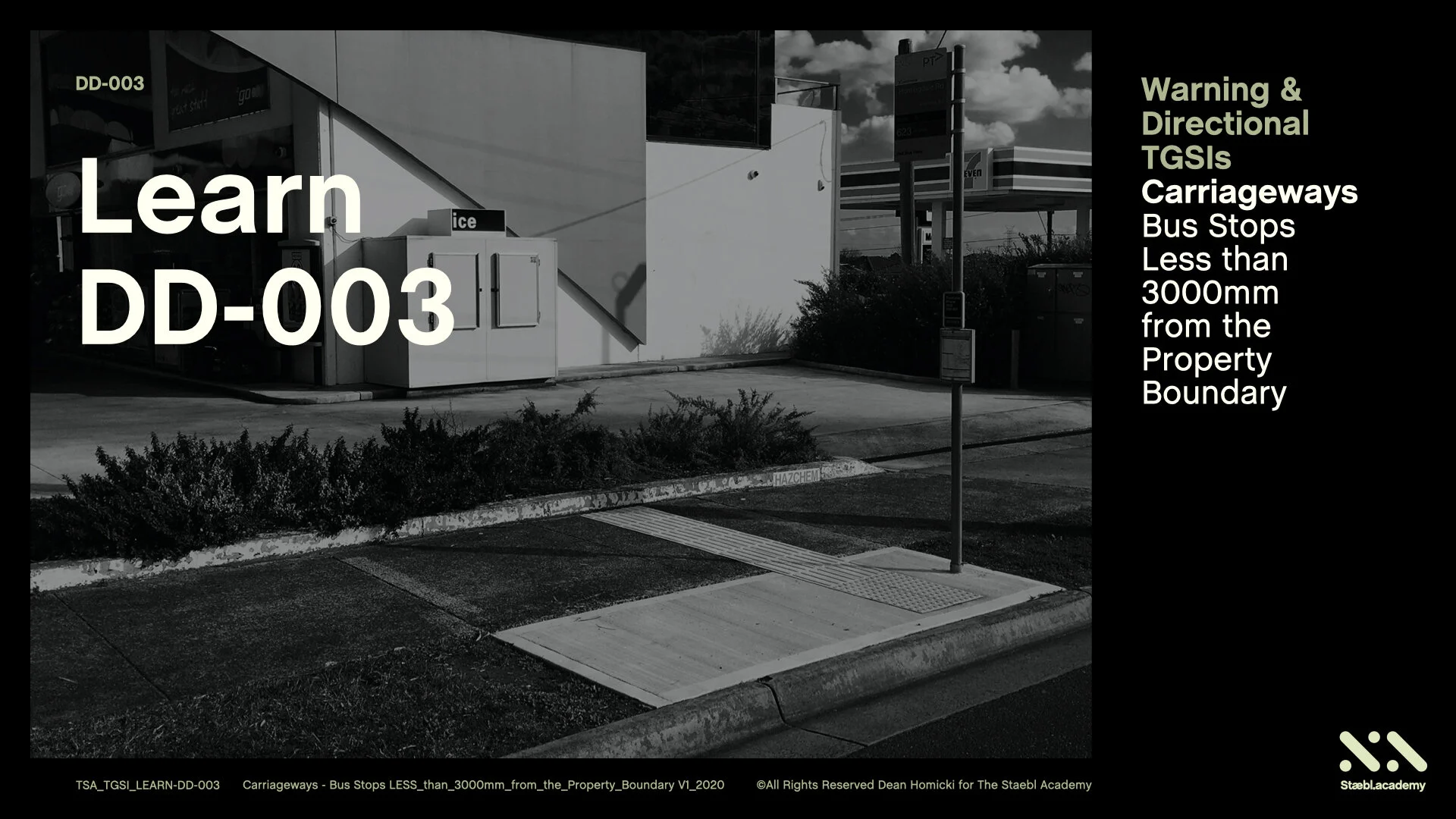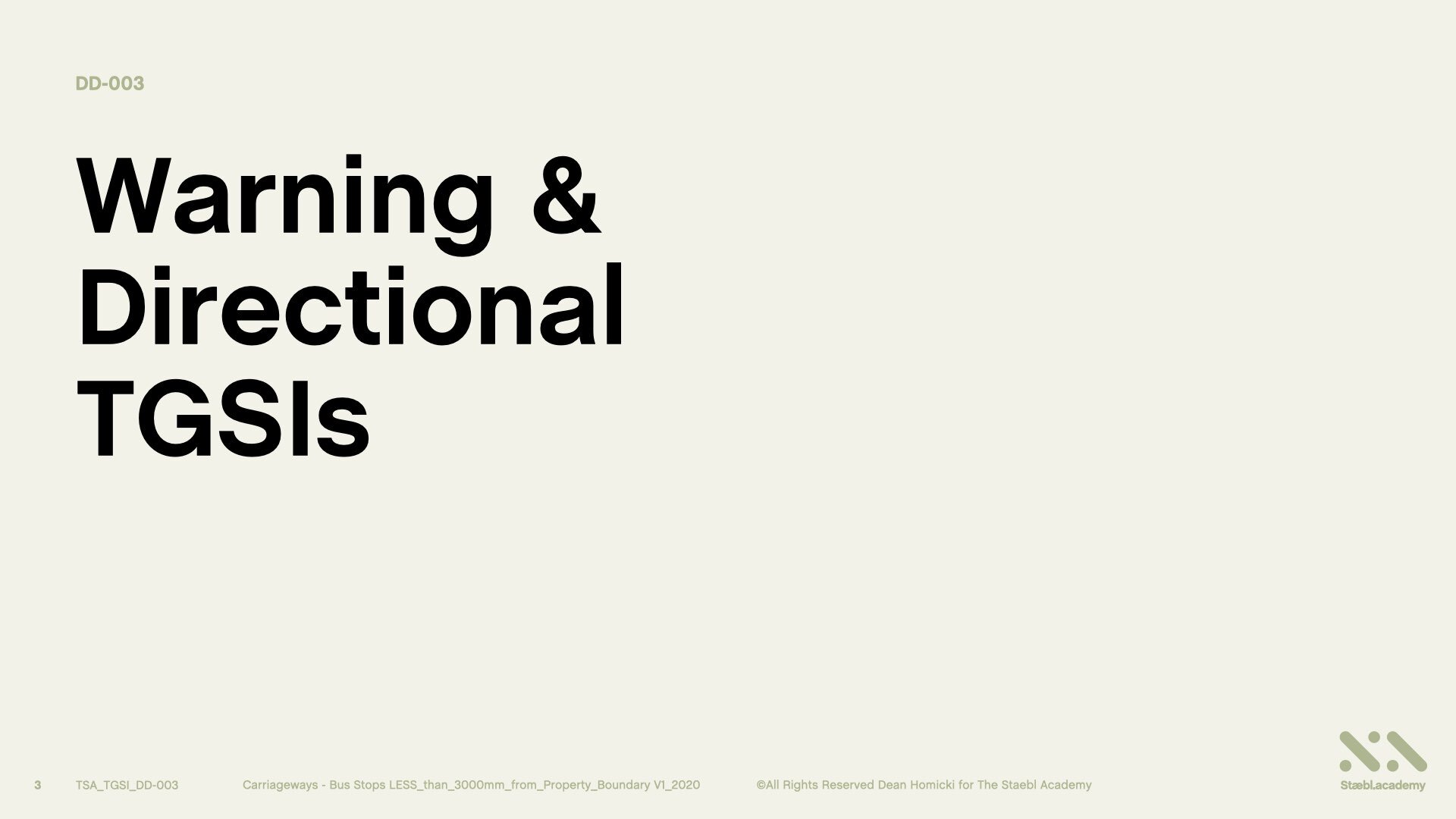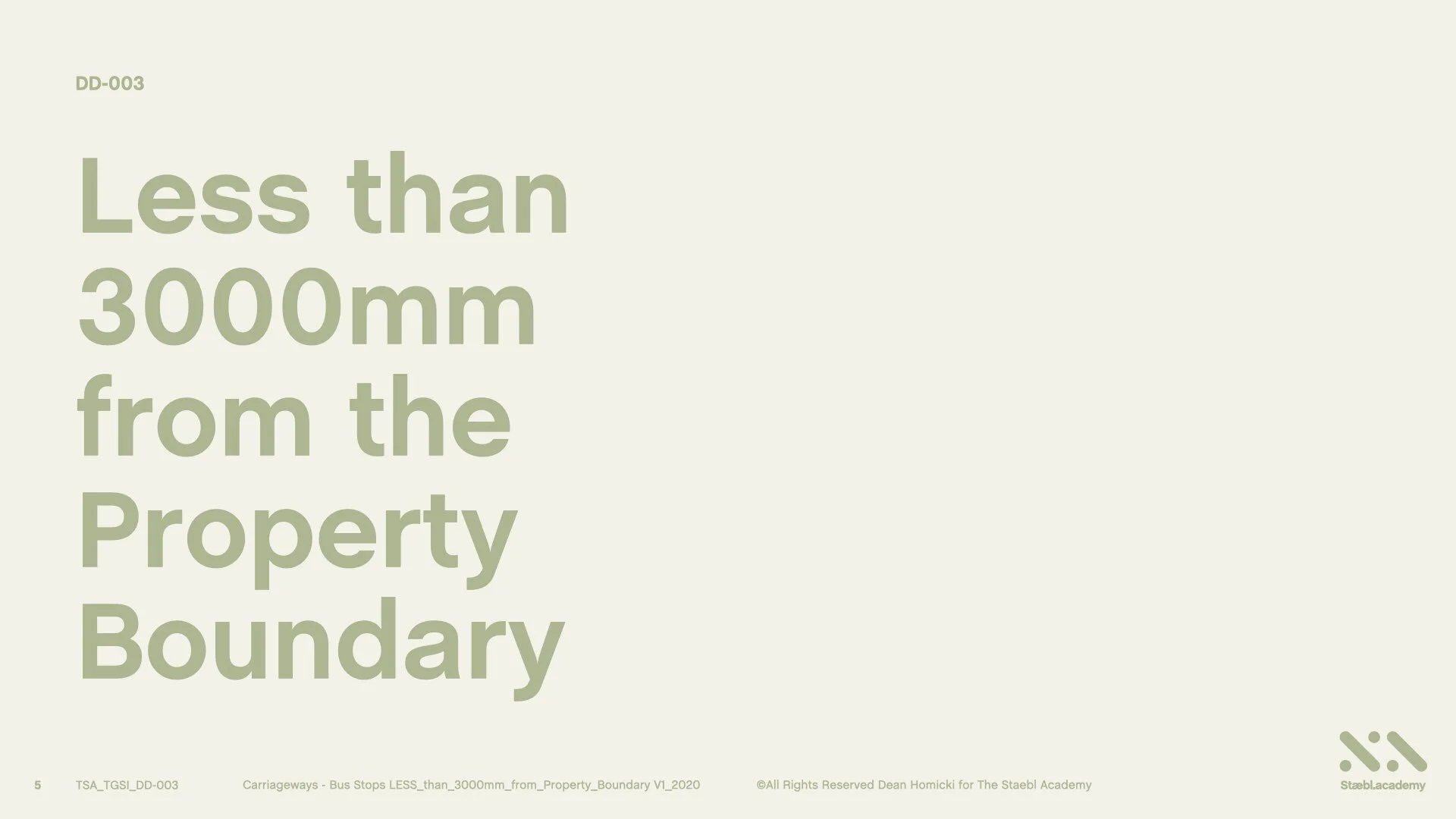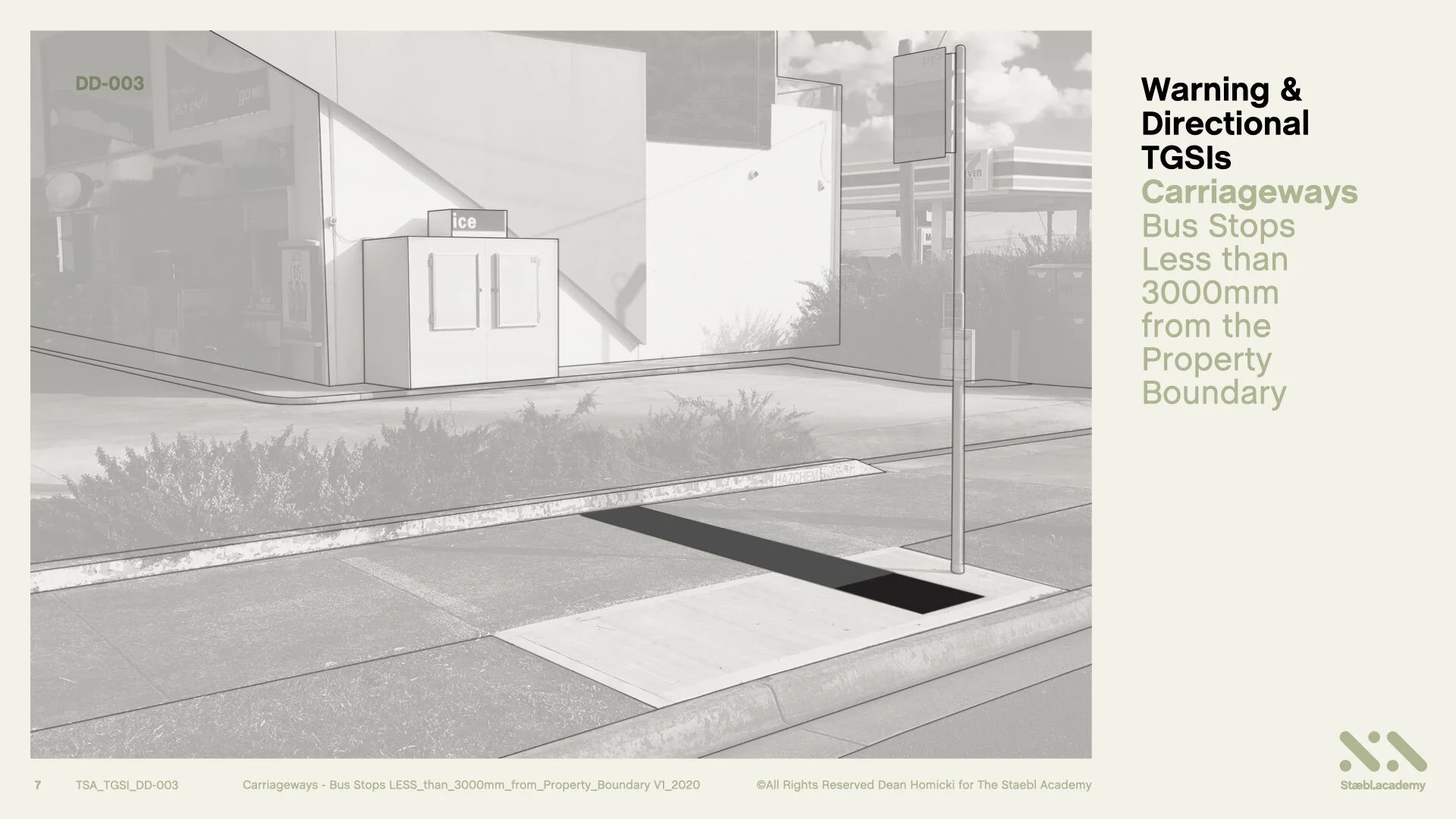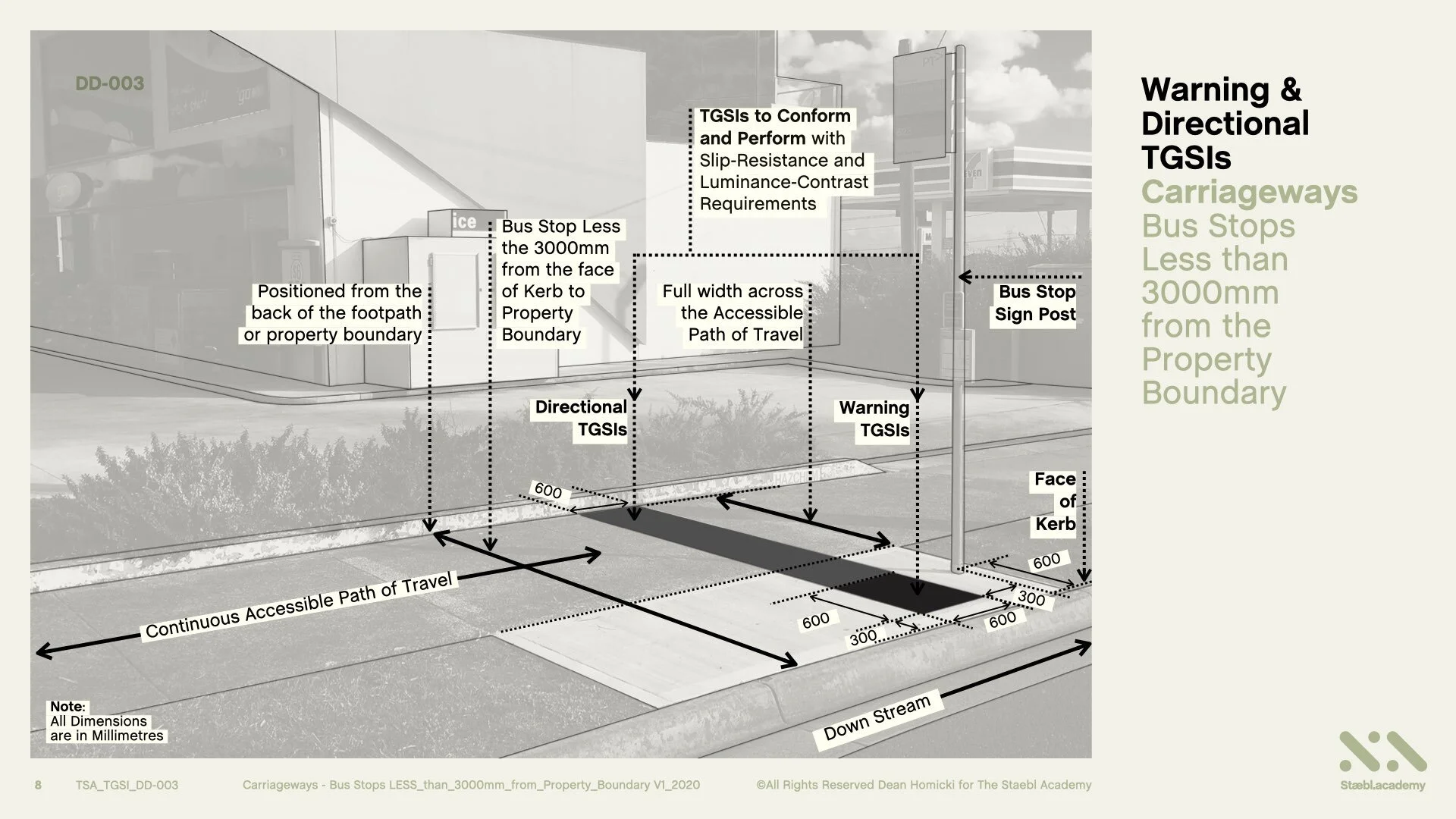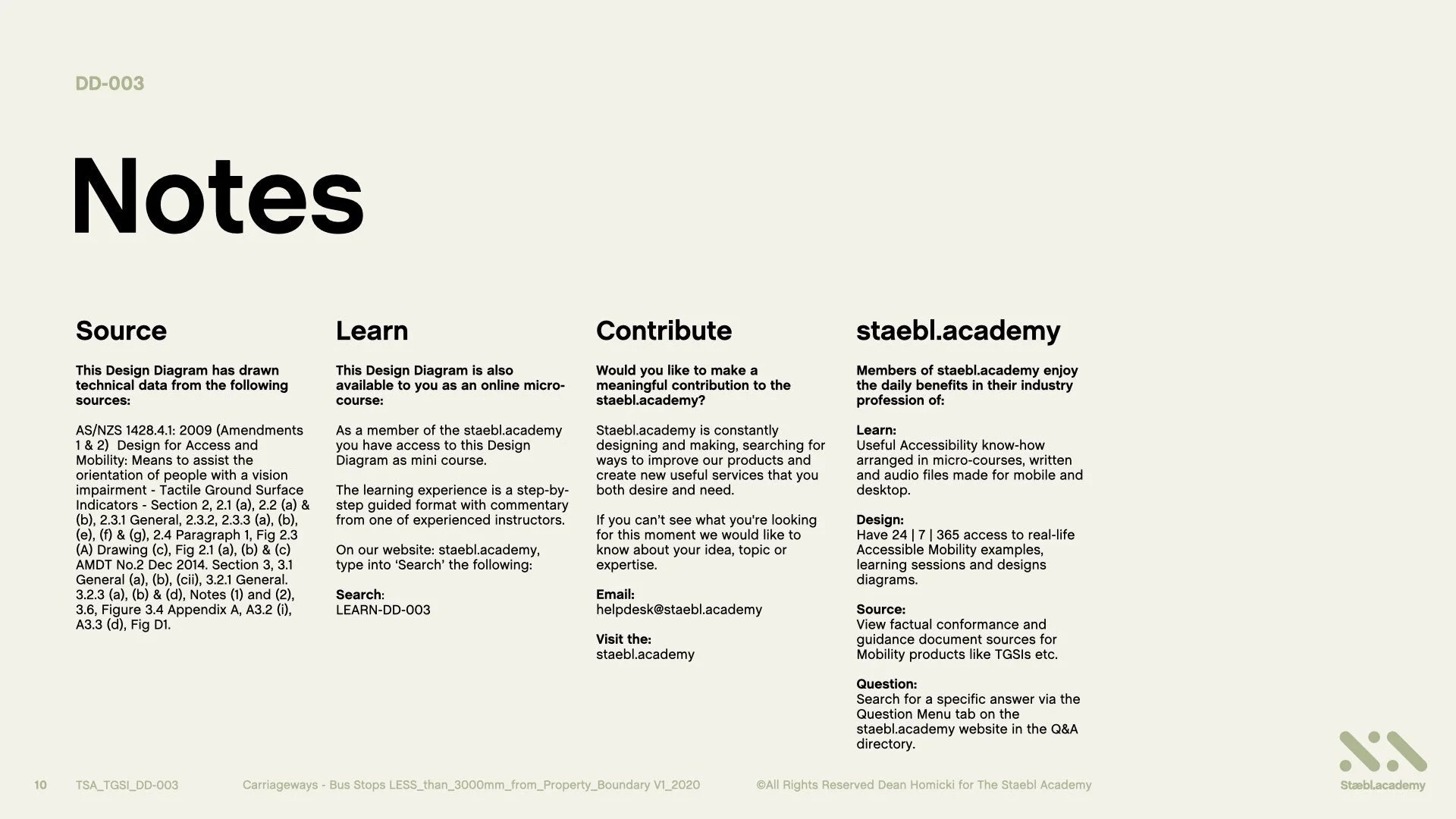Carriageways- Bus Stops Less than 3000mm from the Property Boundary
Course: DD-003 | Length: 5:35 mins | Instructor: Dean Homicki
Chapters
00:32 - Learning Overview
01:44 - Learning Session
02:03 - Lets’s Begin
04:59 - Learning Resources
Transcript
This learning session will cover the use of Warning and Directional TGSIs on:
Carriageways- Bus Stops Less than 3000mm from the Property Boundary
Welcome to staebl.academy TGSI Design Diagram 003. I’m Dean Homicki and I’ll be your guide for this course.
Learning Overview
Let’s review one type of Bus Stop together and extract what the Australian TGSI Standard requires of the situation.
Warning TGSIs Shall be set back 300 mm with a tolerance of +/- 10mm from the edge or face of the kerb, gutter or carriageway, down-stream from the vehicle direction of approach, to a minimum depth of 600 mm, following the continuous application of Directional TGSIs, also applied to a minimum depth of 600 mm, from the back of the footpath or property boundary, for the full width across the path of travel, and must be perpendicular to the direction of travel.
TGSIs for this application shall also conform and perform, with the applicable Slip-Resistance and Luminance Contrast Requirements.
Learning Session
In this example, people approach this Bus Stop from the Continuous Path of Travel (that is, while walking along the property boundary or using the back of the footpath to sure-line.
For the orientation of persons who are blind or vision impaired, applying this knowledge enables us to determine how to use TGSIs and conform to the Normative and Informative Guidelines of the Australian TGSI standards.
The goal of TGSIs in this situation is to orientate and safely direct blind or vision-impaired persons from point ‘A’ to point ‘B’. In other words, to assist a Blind or Vision-impaired person to get from the Path of Travel to the Bus Stop signpost.
Applying this knowledge enables us to determine how to use TGSIs and conform to the specifications of the Australian TGSI standards.
Let’s Begin.
So, Let’s begin.
Here we can see what is defined as a ‘Continuous Accessible Path of Travel’ - This is the footpath. Here’s the location of the face of the kerb, gutter or carriageway.
Now from this edge, we require Warning TGSIs to see back 300 mm with a tolerance of +/- 10mm.
The Bus Stop Sign Post should also be positioned as shown. (This would be 600 mm +/- 10mm from the face of the kerb, gutter or carriage).
The Warning TGSIs shall then be installed for a minimum depth of 600 mm. (Note the Bus Stop Sign Post is set back 300 mm +/- 10mm downstream from Warning TGSI Installation.
And, with the Directional TGSIs, they must be installed for a minimum depth of 600 mm positioned from the back of the footpath or property boundary, the TGSIs are also to the depth of 600 mm because the Bus Stop is less than 3000 mm from Face of the Kerb to the Property Boundary and, across the FULL WIDTH of the Path of Travel.
This is because the Directional TGSI must be detectable by tactile means. (Felt underfoot or by cane).
The use of TGSIs in this instance is to assist the blind and vision-impaired to locate the Bus Stop Waiting platform and information of the Bus Stop sign from along the Continuous Accessible Path of Travel.
If the Directional TGSIs were partially applied or only a 300 mm depth of TGSIs were installed instead of 600 mm, there is a real danger that the TGSIs may not be detected by blind or vision-impaired persons.
TGSIs for this application, also need to conform and perform, with the applicable Slip-Resistance and Luminance-Contrast Requirements.
In future Learning sessions, we will cover the concepts and use of DIRECTIONAL TGSIs.
Learning Resources
That’s the conclusion for Warning and Directional TGSIs Carriageways - Bus Stop Less than 3000mm from the Property Boundary.
You can also access this course as a concise series of design diagrams in the resource section of our website staebl.academy/design. To access this resource now, click on the link below this video.
Thanks for joining me here at the staebl.academy. I look forward to guiding you through another learning session in the near future. Bye for now.
Listen
Click/Tap the audio player below to listen to the written transcript of this design session as an audible version. This is a streamed broadcast from the Staebl.academy site.
Diagrams
Click/Tap on an image from this learning session to view it as a larger picture. You will then be able to scroll through each individual design diagram in this slide-deck for a closer inspection.
Sources
TSA-TGSI-LEARN-DD-003 - This staebl.academy course module has drawn information from the following sources:
AS/NZS 1428.4.1: 2009 Design for Access and Mobility: Means to assist the orientation of people with a vision impairment - Tactile Ground Surface Indicators - Section 2, 2.1 (a), 2.2 (a) & (b), 2.3.1 General, 2.3.2, 2.3.3 (a), (b), (e), (f) & (g), 2.4 Paragraph 1, Fig 2.3 (A) Drawing (c), Fig 2.1 (a), (b) & (c) AMDT No.2 Dec 2014. Section 3, 3.1 General (a), (b), (cii), 3.2.1 General. 3.2.3 (a), (b) & (d), Notes (1) and (2), 3.6, Figure 3.4 Appendix A, A3.2 (i), A3.3 (d), Fig D1


